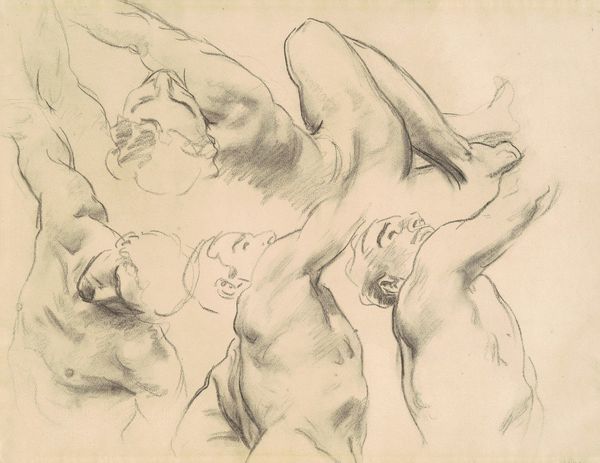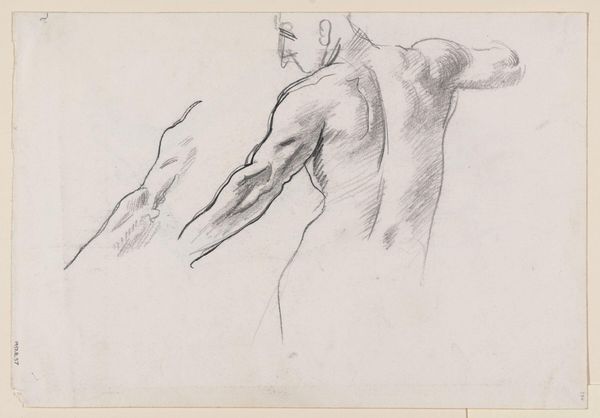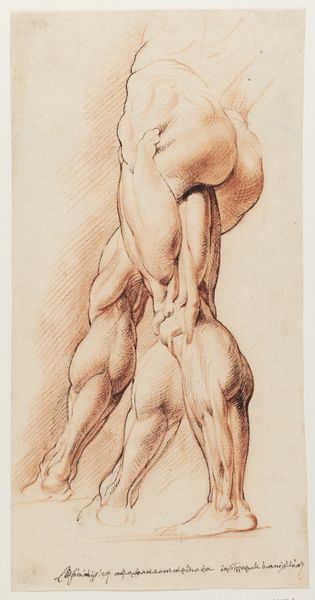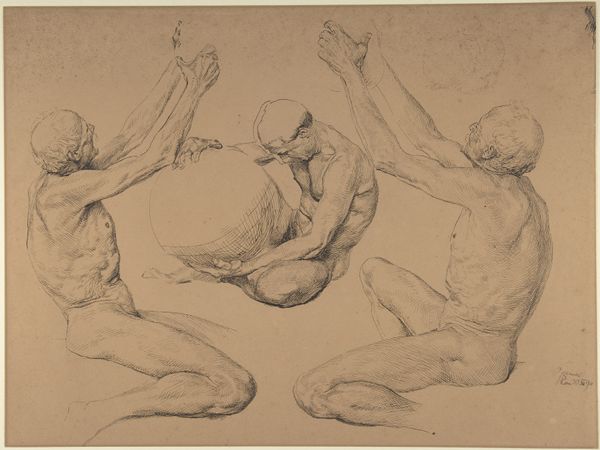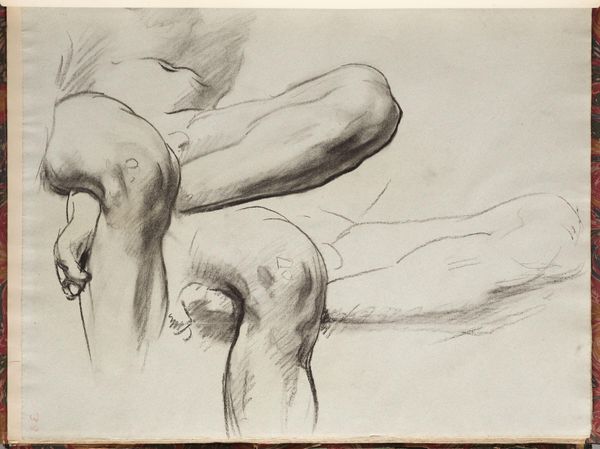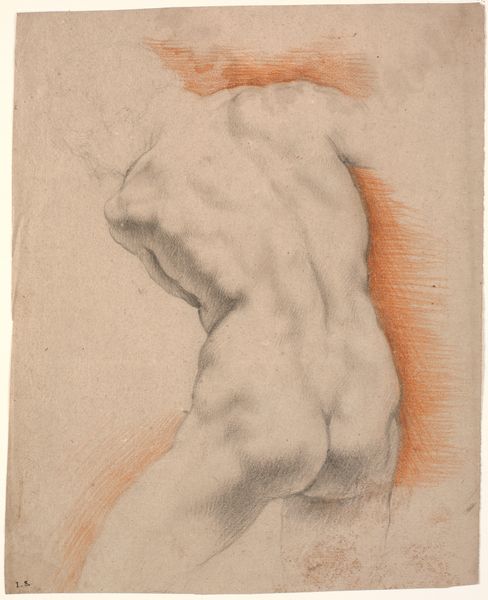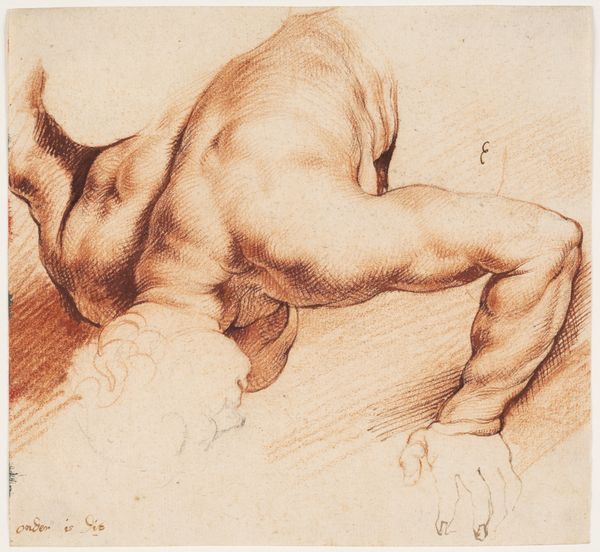
To anatomiske studier af en mand, der læner sig mod venstre, og en anden set bagfra med løftet arm (écorché) 1628 - 1630
0:00
0:00
drawing
#
drawing
#
baroque
#
pencil sketch
#
figuration
#
form
#
pencil drawing
#
line
#
academic-art
#
nude
Dimensions: 220 mm (height) x 305 mm (width) (bladmaal)
Curator: Here we have Willem Panneels' "Two Anatomical Studies of a Man Leaning to the Left, and Another Seen from Behind with Raised Arm (écorché)," dating from 1628 to 1630. I find the rawness immediately striking. Editor: Absolutely, the sheer emphasis on muscle and sinew – it's almost unsettling. One could nearly count the individual fibers; how utterly detached and academic. Curator: Academic, yes, but I wonder if detached is quite right. It is certainly a study of form and how it works – a nude that lays bare a perspective for medical purposes; yet there's something profoundly human and vulnerable exposed in the rendering of such a work. Perhaps there is more on display here that simple flesh? Editor: Perhaps you're giving Panneels too much credit in the expression stakes. Consider what drawing meant in his circles and his socio-economic background. Anatomical drawings like this, likely done with chalk and graphite on paper, were valuable tools. A commodity produced for pedagogical consumption, sold or circulated within the workshops and academies. And he probably completed the anatomical study to get new assignments within artistic circles... Curator: True. These “écorché,” flayed figures, were crucial aids for artists learning to represent the human form, enabling accurate depictions even when clothed. It allowed one to become an acute observer of our human framework. But the almost palpable tension in the figure's pose, the striving and the strain – that elevates this to something beyond mere utility, I would dare say? A study of the mind perhaps? Editor: I'll grant you there's tension but is that intentional artistry or a byproduct of observation? Every line echoes material reality and the circumstances of the era. He skillfully conveys the planes of the muscles and bone with clear, almost technical precision but this also comes across as a clinical representation, stripping away subjective depth. It is the same principle as that found when assessing a piece of labor that can also been seen with cogs. Curator: See, for me it doesn't strip away anything; it reveals. I sense a curiosity, not just to copy what's seen, but to truly understand the underlying essence. What inspires one and gives reason to breath and thrive within it. The same drive you sense from a turning cog to maintain our existence and continue to deliver results in the production world... Editor: Well, regardless of our differing takes, it is interesting to find what breathes the form and delivers different meanings into different bodies through these timeless perspectives. Curator: Indeed. And that perhaps is where the true study resides—in that constant unveiling, whether you focus on anatomy or societal structures, we are merely searching the frame for a glimpse beyond the art!
Comments
No comments
Be the first to comment and join the conversation on the ultimate creative platform.
